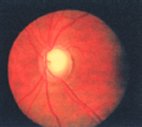Glaucoma
Glaucoma is an optic-nerve disease that, most of the times, is associated with an increase in eye pressure and results in a gradual painless loss of vision. It is called ‘the silent thief of sight’. Optic nerve is a connection that carries signals from the eye to the brain. Eye contains a clear fluid called (aqueous) that circulates through it and then drains out of the eye. In glaucoma, there is resistance to flow of aqueous out of the eye resulting in an increase in its pressure. This causes damage to the optic nerve leading to loss of vision.
Types of glaucoma:
Open-angle glaucoma
Angle-closure glaucoma
Who is at Risk?
A complete eye examination - not only the test of reading the chart - is mandatory, especially after the age of 40. Those at risk of developing glaucoma include:
Those above 35 years (the risk increases with age);
People with a family history of glaucoma;
Those who use steroid eyedrops, pills, or gels;
People with diabetes mellitus, hypertension or who have had eye injuries;
Those who have short sightedness;
Anyone with complaints of pain, redness, and watering in the eyes;
People who see colored rings around lights.
Important diagnostic tests:
Tonometry: to measure the eye pressure
Gonioscopy: to evaluate the aqueous-outflow site
Visual field testing
Optical coherence tomography (OCT): to assess the optic nerve
Treatment
It is important to realize that there is no cure for glaucoma. Once nerve fibers die and visual function is lost, it cannot be recovered. Treatment can only help preserve remaining vision; so it is important to discover the disease in its earliest stage.
In general, we treat glaucoma according to the following order:
eyedrops.
lasers.
surgical operations. Your doctor will select the treatment most suited for your condition.



